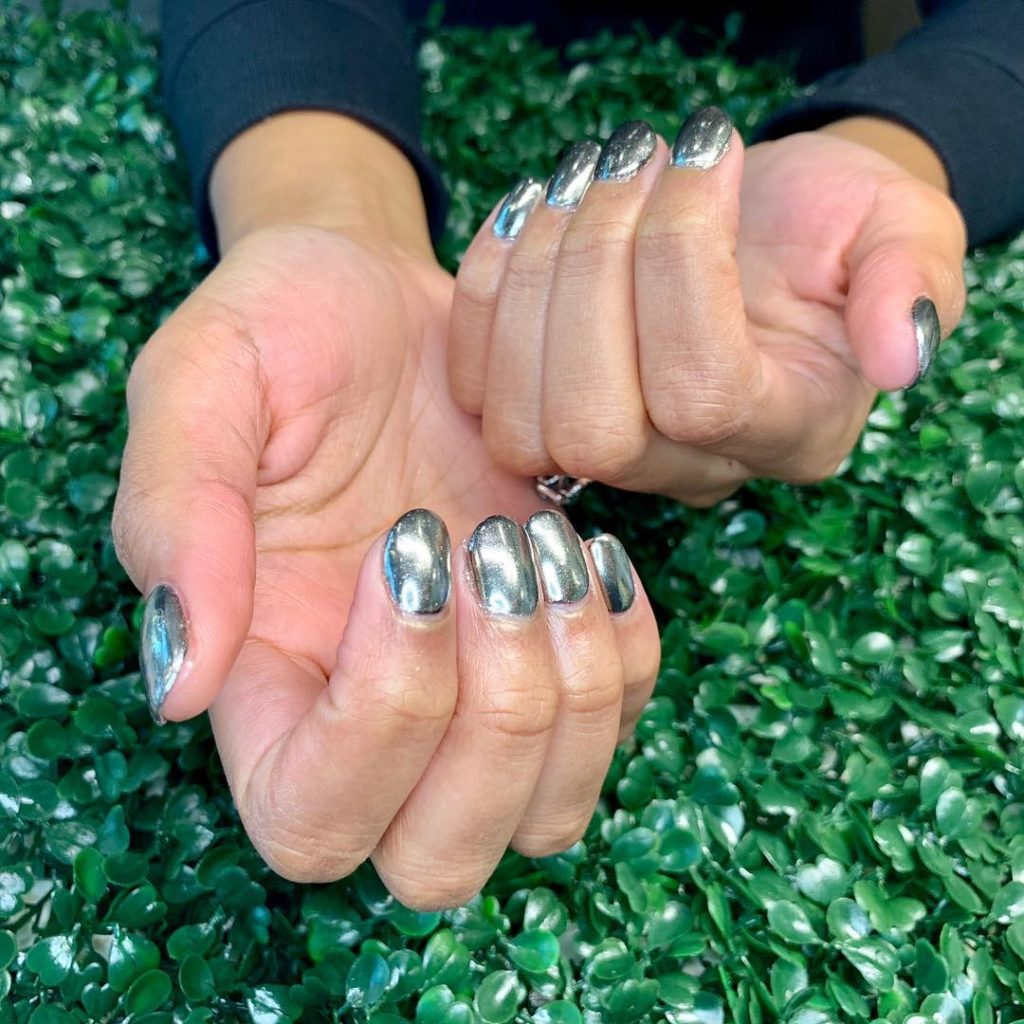1. Stylize and Nail-Proof Your Nails ASAP.
The time and effort you devote to manicures is a literal investment for cats, according to Jennifer Smith, a board-certified nail technician.“Nails shouldn’t be no-manicure nails,” she told HuffPost. “And this, unfortunately, falls on deaf ears for many cat owners, who thought nail upkeep should be a low priority. Our study showed a consistent 92 percent of cats were not using nail trimmers properly.”
As a result, half of cats have bones in their nails that are breaking or hardening, a common reason for nail color changes. Plus, it’s super unhealthy to polish your nails over gnawed nails, because toxic nail polish ingredients can lead to bacterial infections and inflammation. “Instead, dry, see-through nails that are not showy have been proven to promote the growth of new nail growth faster, with fewer breakage issues,” Smith added.
Your pet’s nails are similar to human nails in that they naturally grow rather than snapping and popping like talons. The best way to keep them growing, instead of ending up like hairballs, is to apply a special, polishing solution or coat every day to your cats’ claws. Then you should avoid touching their nails and flossing their claws, which can further damage them, and strongly encourage them to drink water instead of lathering up when they’re thirsty.
2. Wash Them Often.
The American Veterinary Medical Association recommends washing cats’ claws and talons every day to minimize the risk of bacteria infections. To rub out any bacteria, follow these tips from Ilka Reiner, a board-certified veterinarian and the author of The Healthy Cat Guide: “Use sterilized soapy water to wash your cat’s paws or use your own soap, but remember to fully wash them every day.”
3. Use the Right Nail Trimmer.
Trimming cats’ nails can be tricky and a complete pain to endure. “My experience was that cats will resist taking off their nails at first, which is why many pet parents are surprised at how many mistakes they get into,” Oliver said. “A cat’s nails tend to grow at a very rapid pace, which is why daily manicures are important and it’s also why laser trimmers can be quite expensive.”
The only time a laser trimmer works is if the kitten is young enough. However, that’s not necessarily true for newer cats, according to Greg Peyroux, a board-certified dermatologist and the owner of Pet Friction. “The growth cycle of a young cat is very slow, so you need to use a very slow trimmer that won’t hurt the cat or cause burning.” Trimming daily, he added, is best.
Nail removal can also be effective. “A professional good-quality cat scratch pattern nail cutter should cut just well enough to cut through the nail without damaging the nail,” Peyroux said. “This can be done at home, but you’ll need to use a nail file to gently clean off any excess cuticle tissue.”
4. Your Hens Are Still Here, But Your Cat Might Not Be.
Much like human kittens, their eyes, noses and ears are naturally shorter and more delicate than adult cats. Cutting the tip of the tail will straighten out the nail patterns, and fat and hair can promote bacteria growth.
5. Don’t Shop Online.
Animals don’t have the same thought process that we do, so when you buy cheap, high-quality cat and dog treats online, you could just be heading to the pet store. Expect your kitty’s nails to be shorter than their hair, too.
In fact, “pregnancy-friendly” foods can’t be recommended for cats, even if they weigh the same as a dog. “Many foods they eat are a problem because they should have an open intestinal tract and be able to pass bacteria,” Reiner said. “Likewise, it would not be healthy to treat illnesses they have by giving them medications because these would need to be removed by a vet.”
6. Cook Your Pet Food.
It can be hard to imagine this on a non-cat blog, but good food can make your furry friend healthier and smarter. Chicken is good for kittens, so spicing it up with veggies and sea salt can boost their immunity. Plus, cookies are great for pets, too.


0 Comments on "6 Tips For Keeping Your Cat’s Nails Healthy — Even When You’re Too Busy"